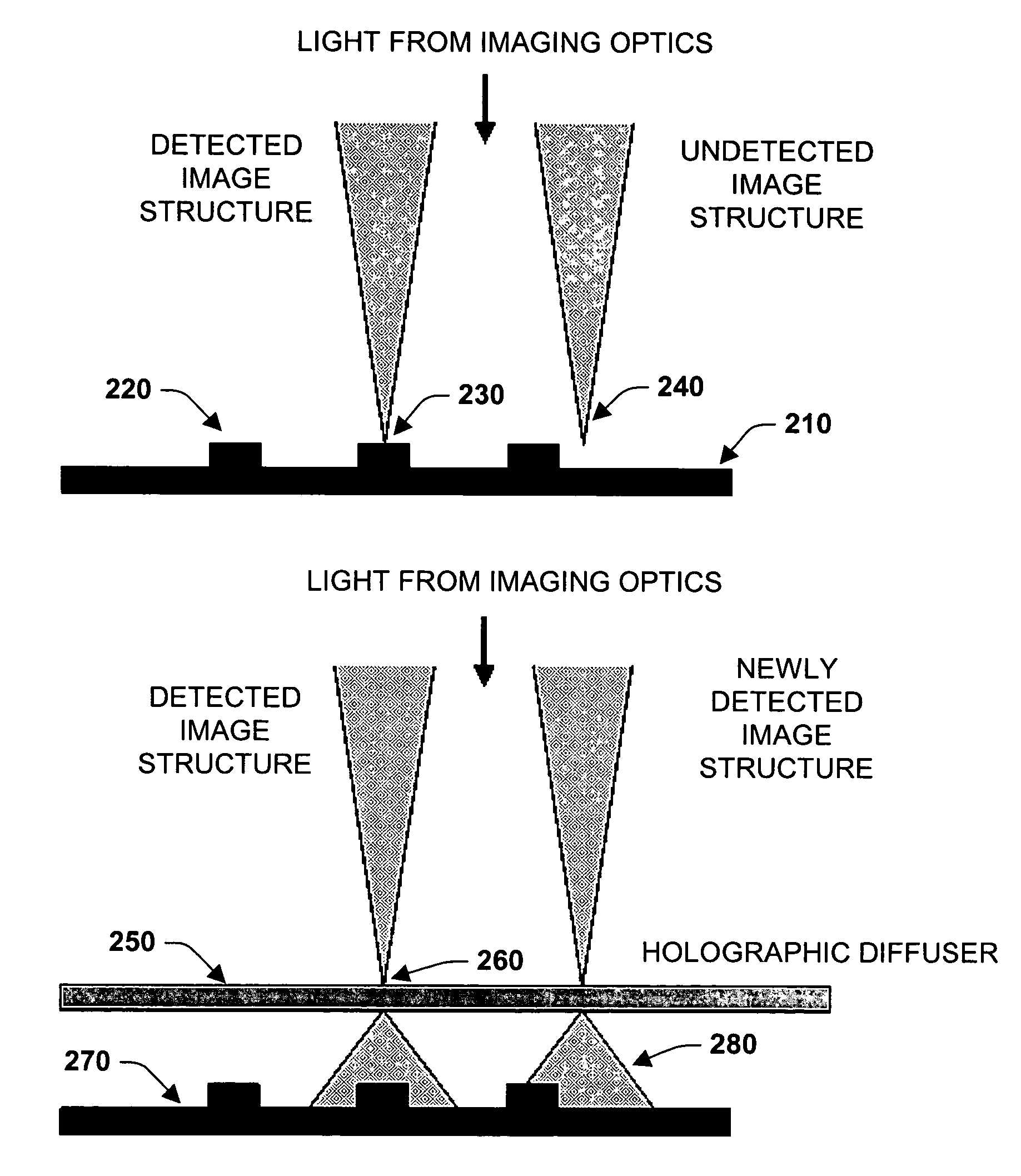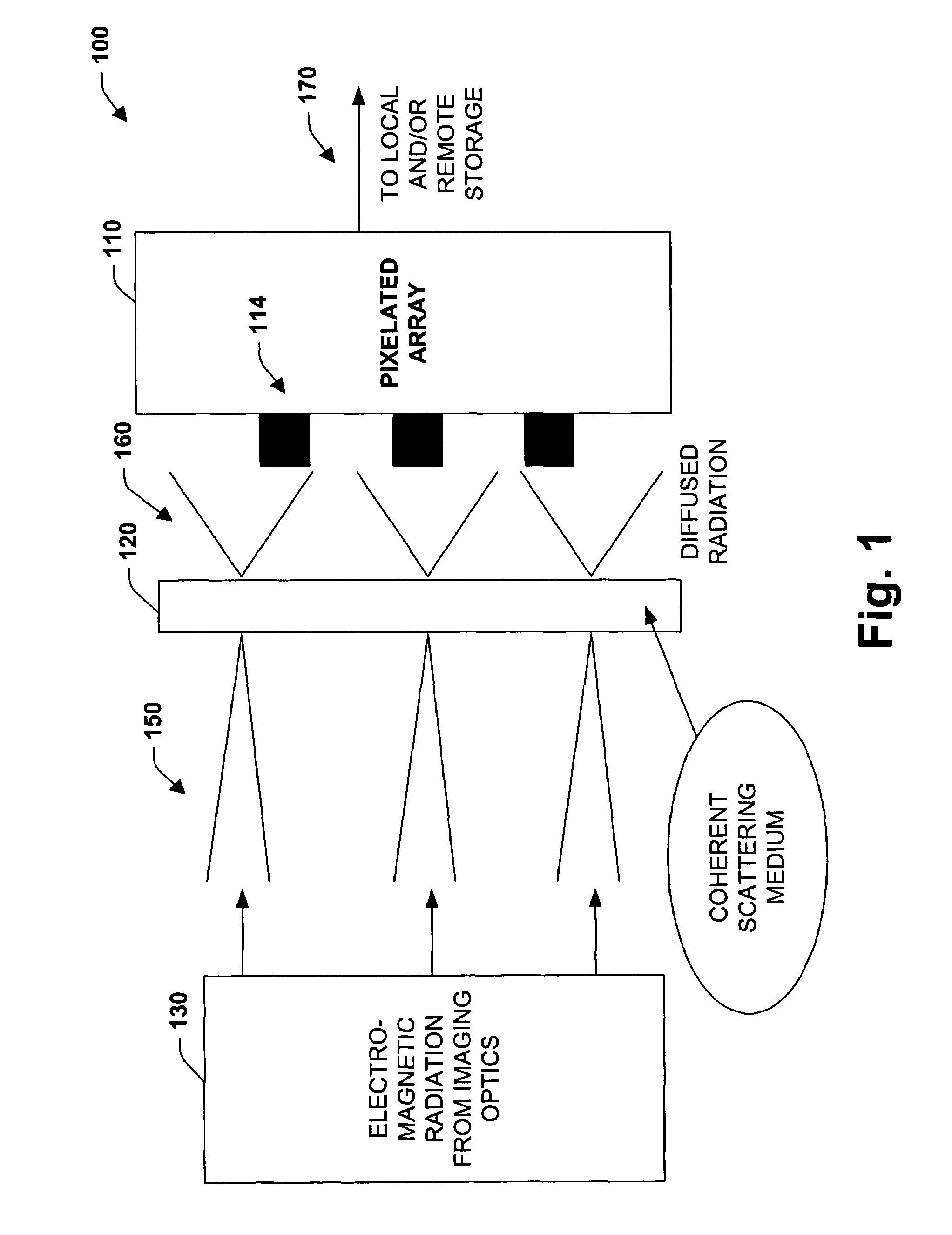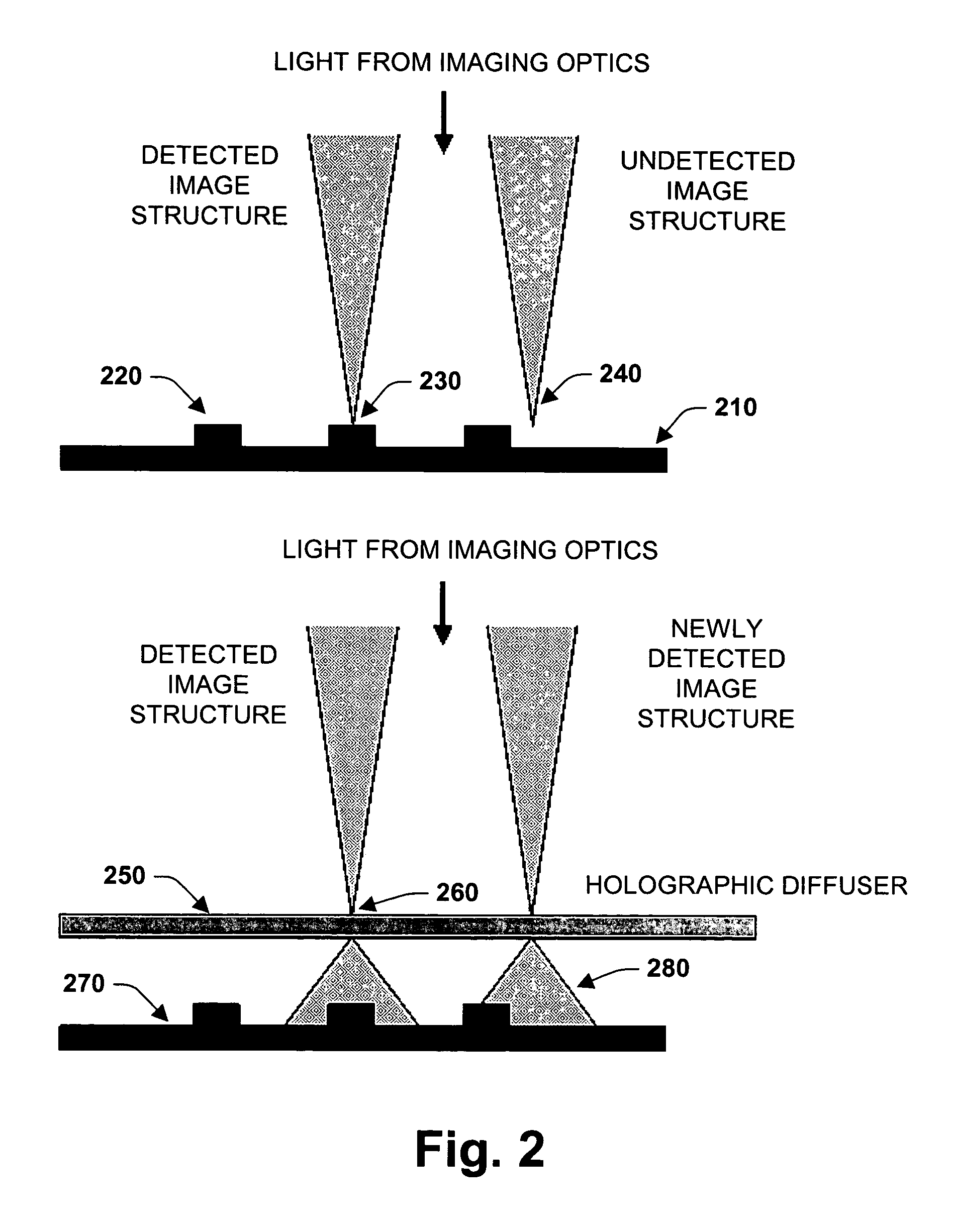System and methods for increasing fill-factor on pixelated sensor arrays
a technology of pixelated sensor array and fill-factor, which is applied in the field of image and optical system, can solve the problems of relativly low-cost sensors that can be made to perform (or outperform) the very expensive and high-fill-factor sensors currently available, and achieve the effects of reducing the addition of complex components, facilitating imaging performance of digital sensor array, and reducing the cost of assembly
- Summary
- Abstract
- Description
- Claims
- Application Information
AI Technical Summary
Benefits of technology
Problems solved by technology
Method used
Image
Examples
Embodiment Construction
[0015]The present invention relates to a system and methodology that facilitates increasing the fill-factor of digital sensor arrays at a reduced cost. In general, fill-factor relates to the active area of the sensor array with respect to the inactive area or space between pixels on the array. By increasing the fill-factor, the present invention enables transmitting maximum amount of optical information to the active portions of the array while mitigating information loss between pixels on the array. In one aspect of the present invention, an image detector system is provided. The system includes a pixelated sensor array that is responsive to electromagnetic radiation such as visible light, for example. A coherent scattering medium diffuses the electromagnetic radiation with respect to the pixelated sensor array in order to increase the fill-factor of the array.
[0016]Systems adapted in accordance with the present invention can include digital image processing from the respective sen...
PUM
 Login to View More
Login to View More Abstract
Description
Claims
Application Information
 Login to View More
Login to View More - R&D
- Intellectual Property
- Life Sciences
- Materials
- Tech Scout
- Unparalleled Data Quality
- Higher Quality Content
- 60% Fewer Hallucinations
Browse by: Latest US Patents, China's latest patents, Technical Efficacy Thesaurus, Application Domain, Technology Topic, Popular Technical Reports.
© 2025 PatSnap. All rights reserved.Legal|Privacy policy|Modern Slavery Act Transparency Statement|Sitemap|About US| Contact US: help@patsnap.com



